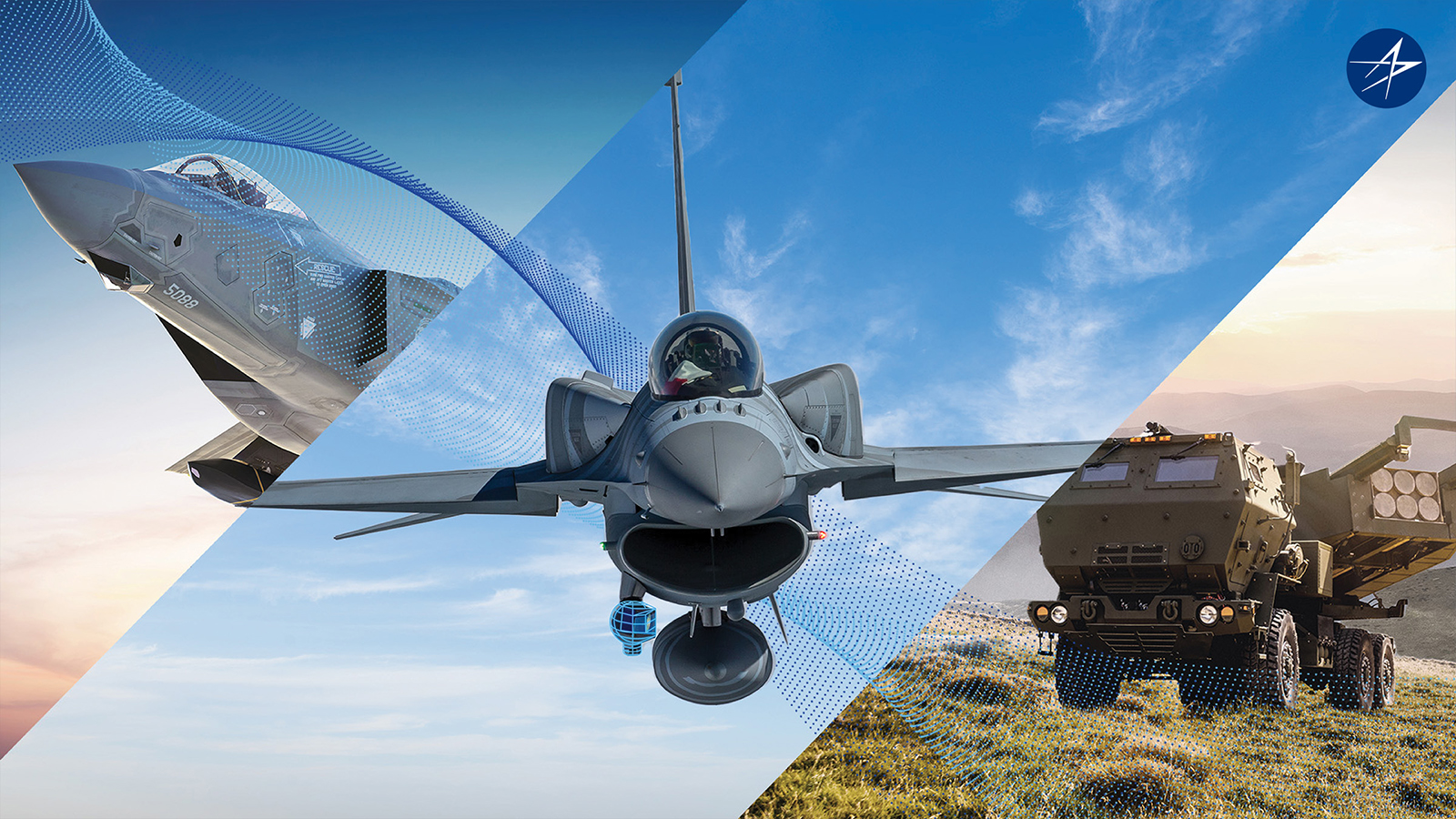An innovation by Lockheed Martin will deliver unprecedented interoperability to F-35 Lightning II and F-16 fighters, ground-based artillery systems such as HIMARS, and the MLRS family of munitions. For NATO partners, the interoperability could extend to other 4th Generation jets as well as new mobile rocket launchers built in Europe. The innovation: Lockheed Martin engineers are transforming the combat-proven Sniper® targeting pod — a staple on 4th Generation fighters worldwide — into an edge communications and computing node to enable combined joint all domain command and control. While the F-35 comes equipped for interoperability, two technical enhancements in this new Sniper Networked Targeting Pod will keep 4th Generation fighters and other legacy platforms in sync. An advanced datalink compatible with the F-35 will allow seamless sharing of target and surveillance information between aircraft. A Mobile Ad-hoc Network (MANET) radio, meanwhile, will support a decentralized but highly secure mesh network of multiple air, ground and sea platforms ready to share and act on that information.
The rapid development of Sniper is a direct response to NATO defense forces that seek closer collaboration between new F-35s and existing fleets of 4th Generation fighters, which they expect to fly another 40 years. Customers also want continuous target-tracking data from aircraft sensors to improve ground-based precision fires’ capabilities and strike targets that relocate after being discovered. Lockheed Martin’s investment in the Sniper Networked Targeting Pod is part of the company’s vision for 21st Century Security®, which aims to integrate networking capabilities and edge computing across customers’ aircraft, sensor systems and weapons. The enhanced Sniper will enable missions in which F-35 multirole fighters and their advanced sensors serve as forward observers that identify and track targets while sharing precise coordinates with F-16s and ground-based Command and Control Systems that allow the employment of MLRS family of munitions from either HIMARS or M270. Lockheed Martin has proven interoperability through a series of ongoing tests and demonstrations. Recent tests, using HIMARS and GMLRS, have shown Sniper’s ability to connect air and ground forces in new ways. The company plans to conduct more-complex flight testing and live missile shots in cooperation with the U.S. military.

“The F-35 is the aircraft of choice for allies across NATO. By 2035, there will be more than 600 F-35s in the European region. The enhanced capabilities the Sniper targeting pod can bring will serve to further enhance the connectivity and interoperability the F-35 brings to current and future customers,” said J.R. McDonald, vice president of F-35 Business Development.
“To deliver unprecedented interoperability, we’ve evolved Sniper to do what’s never been done before. The Sniper Networked Targeting Pod connects the battlespace, enabling seamless data sharing across platforms and systems—a capability in high demand by U.S. and allied forces and a powerful force multiplier for joint operations,” said Stacy Kubicek, Vice President, Sensors & Global Sustainment, Lockheed Martin.
Core to 21st Century Security, Lockheed Martin engineers have speeded the development and testing of Sniper by harnessing the latest digital technologies such as simulated missile shots directed by real-world inputs from the targeting system. Lockheed Martin chose the Sniper pod to facilitate communication between 5th and 4th Generation jets for two reasons:
- Upgrading a “plug-and-play” external pod with a datalink compatible with 5th Generation fighters provides more flexibility than modifying the aircraft.
- The Sniper pod is widely integrated, easy to upgrade, and trusted by air forces around the world.
The electro-optical sensor system has been successfully integrated on the F-16, as well as most other types of military jets deployed in Europe. U.S. and allied air forces have put nearly 2,000 Sniper pods through more than 4 million operational hours worldwide including combat and nontraditional intelligence, surveillance and reconnaissance missions. Now, besides linking F-35s, F-16s, rocket launchers, and command and control systems, the Sniper Networked Targeting Pod could enhance capabilities of other Lockheed Martin-built systems. Those include the United Kingdom’s SkyKeeper air-defense system and Lockheed Martin’s new low-observable hypersonic missile, Mako.















